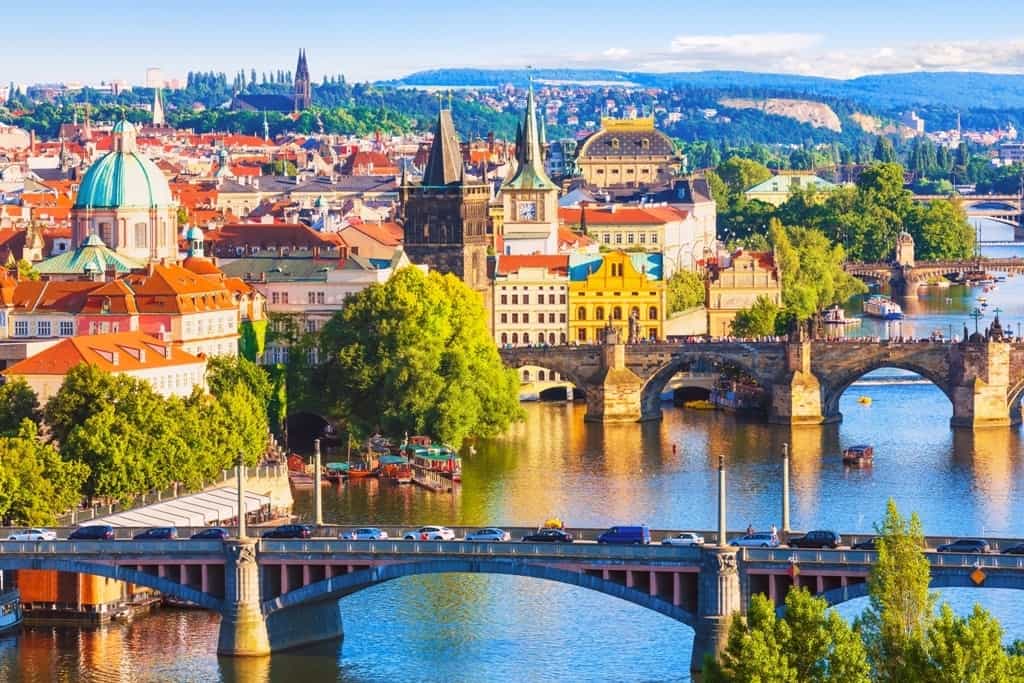Planning to spend 2 days in Prague, and looking to see as much as possible? There are so many things to see in the city over a weekend. This 2-day itinerary will help you make the most out of your stay in Prague.
The rich history of the city is represented in many wonderful architectural landmarks that will ensure that your 2 days in Prague are easily filled, even before you sample its beers and traditional cuisine. The Prague Card which includes a City Tour, as well as free entry to many of its highlights and transport, certainly makes getting around the City and seeing the sights are fairly easy.
By necessity, if you have just 2 days, your focus will be the Old Town and the wonderful buildings on the far bank of the Vltava River over the Charles Bridge.
You might also be interested in: The best day trips from Prague.
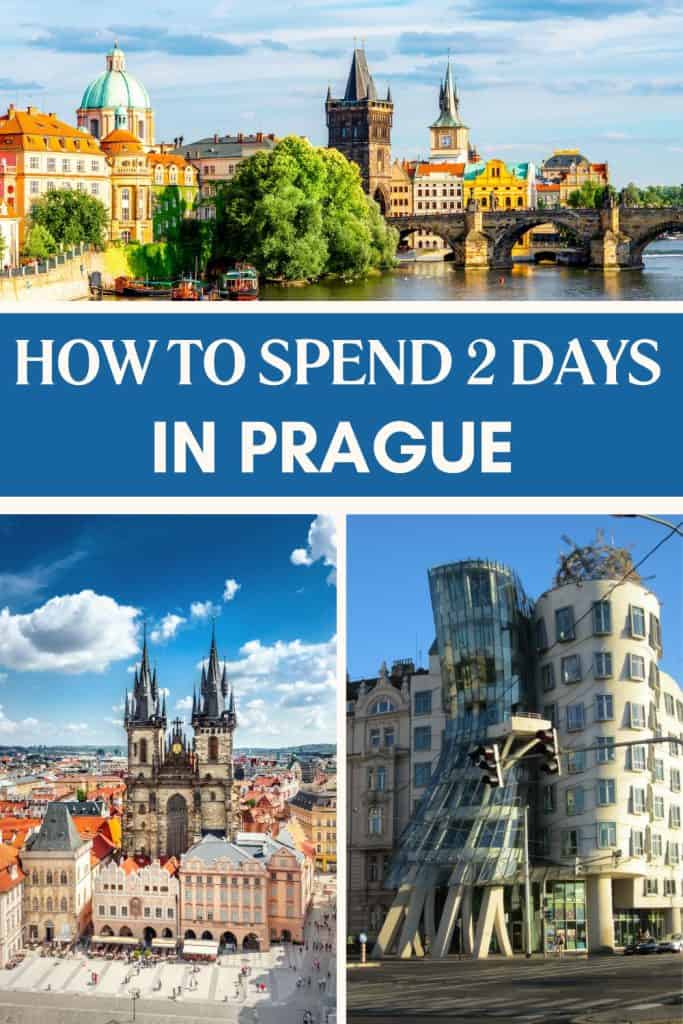
Disclaimer: This post contains affiliate links. This means that should you click on certain links, and then subsequently purchase a product, I will receive a small commission.
Table of Contents
Two Days in Prague: Where to stay?
Hotel Klarov is located in the heart of Prague and offers modern rooms with stunning views of Prague’s castle. Click here for more information and to book your stay.
Four Seasons Hotel Prague is less than a five-minute walk from Charles Bridge and is contained with 3 old buildings, Baroque and Renaissance. Click here for more information and to book your stay.
Prague Marriott Hotel in the heart of the Old Town next to Old Town Square is ideally located for a short trip to Prague. Click here for more information and to book your stay.
How to spend two days in Prague, things to do and see
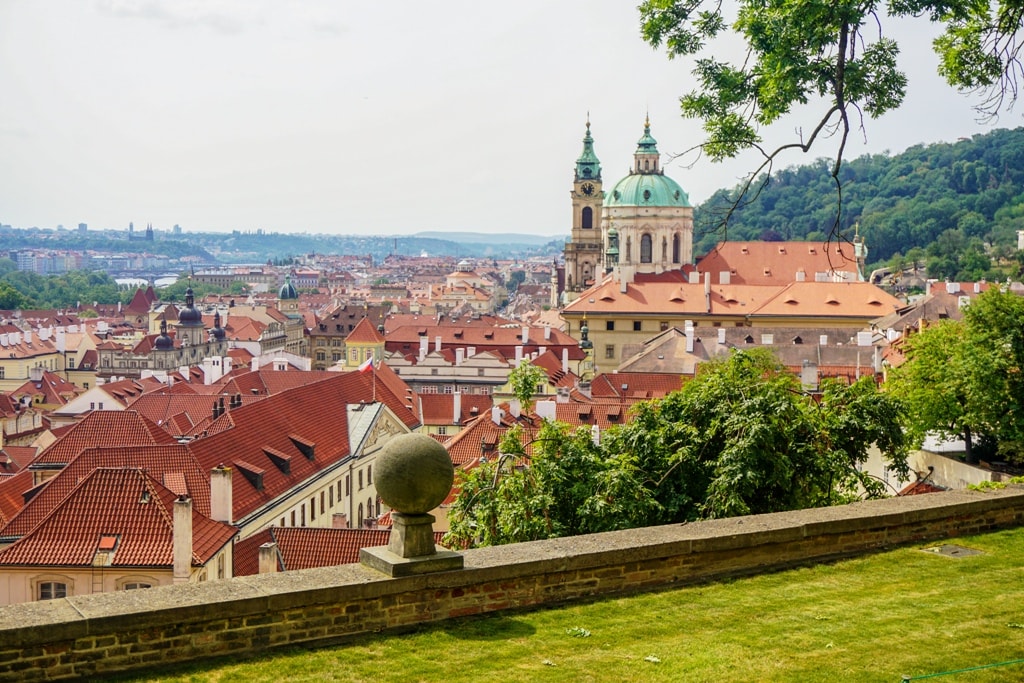
2 Days in Prague: Day One
On the surface, the daytime programme on Day One may look a little light. If you are do justice to these three landmarks, you will use most of the day.
Charles Bridge
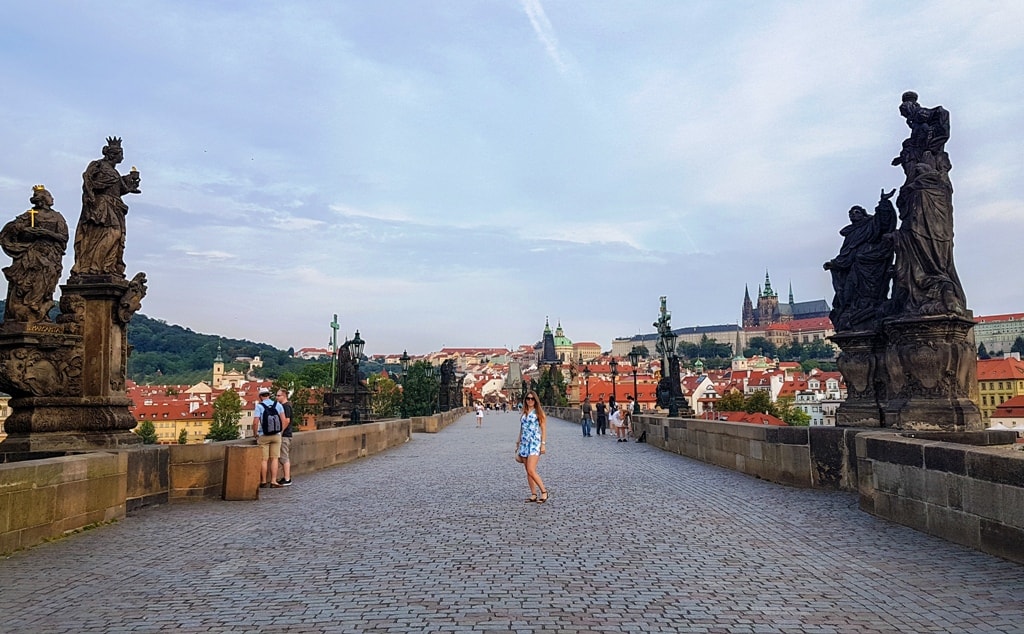
It is not often that a bridge which is after all primarily a means of getting across a river is a tourist attraction but you have to make an exception with the Charles Bridge. It links Prague Castle with the Old Town, a 520-meter structure with 32 different points of interest to see. It was begun in 1357 but not finished until 1402.
There are numerous statues including one of the Holy Roman Emperor, Charles V, and the Country’s most revered saint, John of Nepomuk which was unveiled in 1683. There are impressive Gothic Gates and great views down the river. Much superstition surrounds the Bridge, even to the extent of the date and time when the bridge stone was laid.
Prague Castle
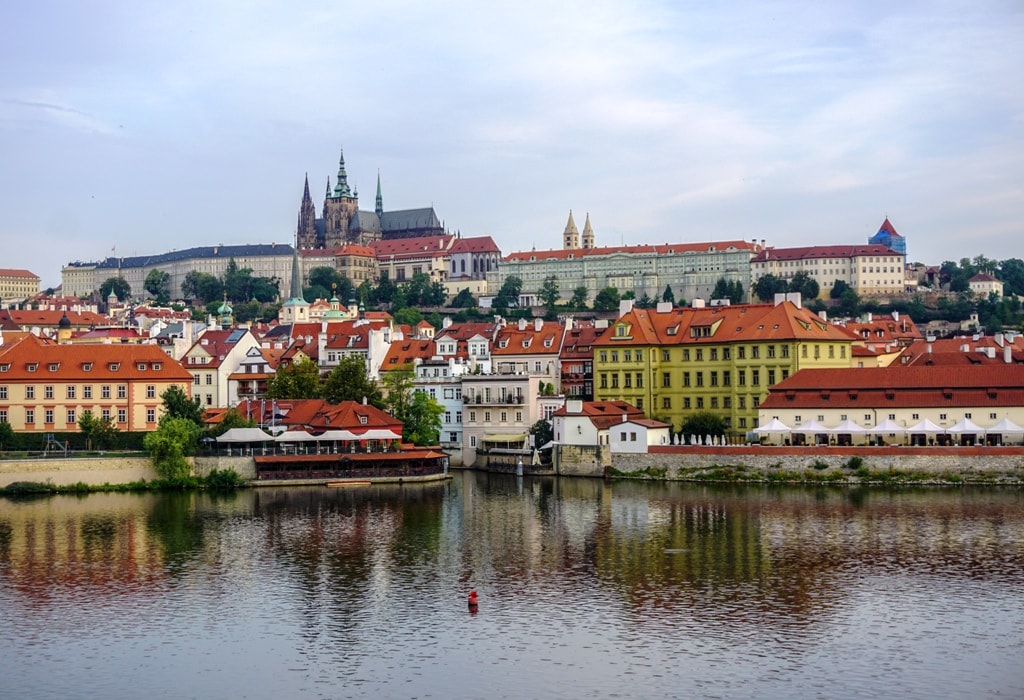
This Castle was the home of the Bohemian Kings and even today, you will enjoy seeing the changing of the guard at noon. Prague Castle sits on high, a 45-hectare site and it definitely deserves hours of your time. The Guinness Book of Records named it the oldest ancient castle in the world, built as a fortress around 970 and home today of the Czech President.
Highlights include the Vladislav Hall, the Royal Garden and Summerhouse with its fountain, Lion’s Court, and the Ball Pavilion. Even though you will be visiting during the day, make sure you see how impressive it looks when lit up at night.
Click here to book your skip-the-line tickets to Prague Castle.
Alternatively, you can book a small group guided tour.
St. Vitus Cathedral
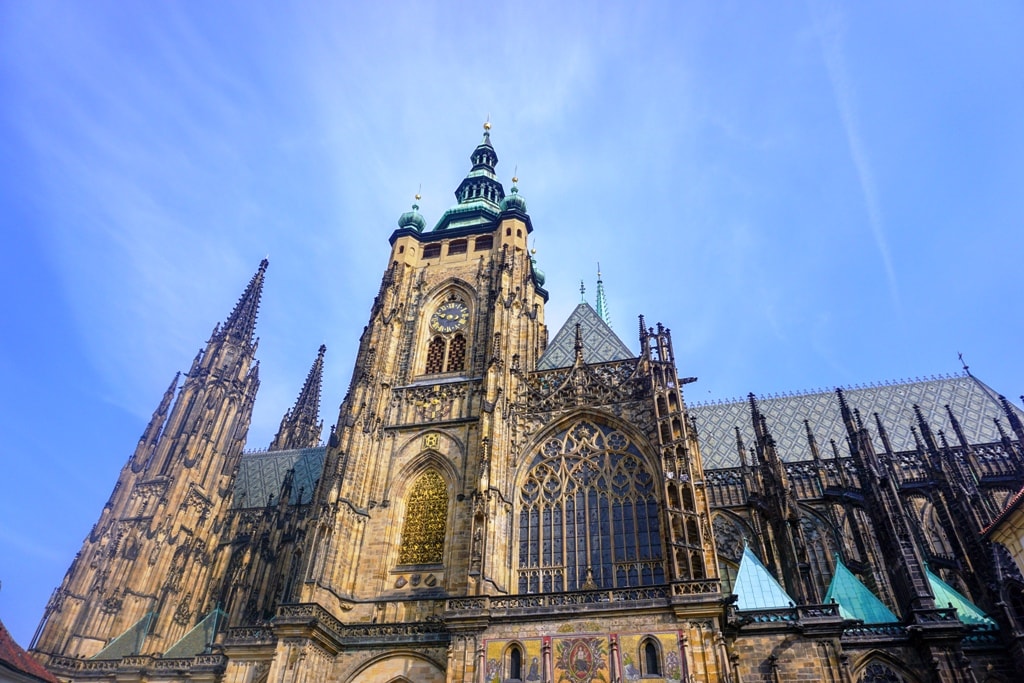
This cathedral is within the Palace Grounds. It is built on the site of a Romanesque Rotunda from 925, it was begun in 1344 and took several centuries to complete. The result is a mixture of styles; Gothic and Neo-Gothic, Baroque and Renaissance. Several saints and Bohemian kings are buried in this Roman Catholic Cathedral.
The stained-glass windows depicting the Holy Trinity date from 1370 and the Small St. Wenceslas Chapel has an altar with over 1,300 precious stones. The tower is almost 100 meters high and the views from there are spectacular.
Night-time in Prague
Czech cuisine is not among the most famous in Europe, never mind the world but things are changing to be fair. It tends to be simple and wholesome but when it comes to beers, few countries can claim mastery over the Czech Republic.
Here are a few choices on how to spend your night in Prague:
Enjoy a medieval dinner with unlimited drinks.
Another great option is this 3-Hour Beer Tour with Traditional Czech Dinner.
And finally, you can also enjoy a Sightseeing Dinner Cruise on Open-Top Glass Boat.
2 Days in Prague: Day Two
Old Town Hall Tower & the Astronomical Clock

The view from the tower of the Old Town Hall will reveal a host of spires; one of Prague’s nicknames is the ‘’City of a 1,000 Spires.’’The Town Hall has a lovely Gothic doo, a fine art collection, a 14th Century chapel, and a former prison.
The clock on the face of the Tower is extremely interesting. It is the oldest of its kind in the world, revealing the 12 apostles crossing the window above the dial on the hour, every hour.
Click here to book your skip-the-line tickets to the astronomical clock.
Wenceslas Square
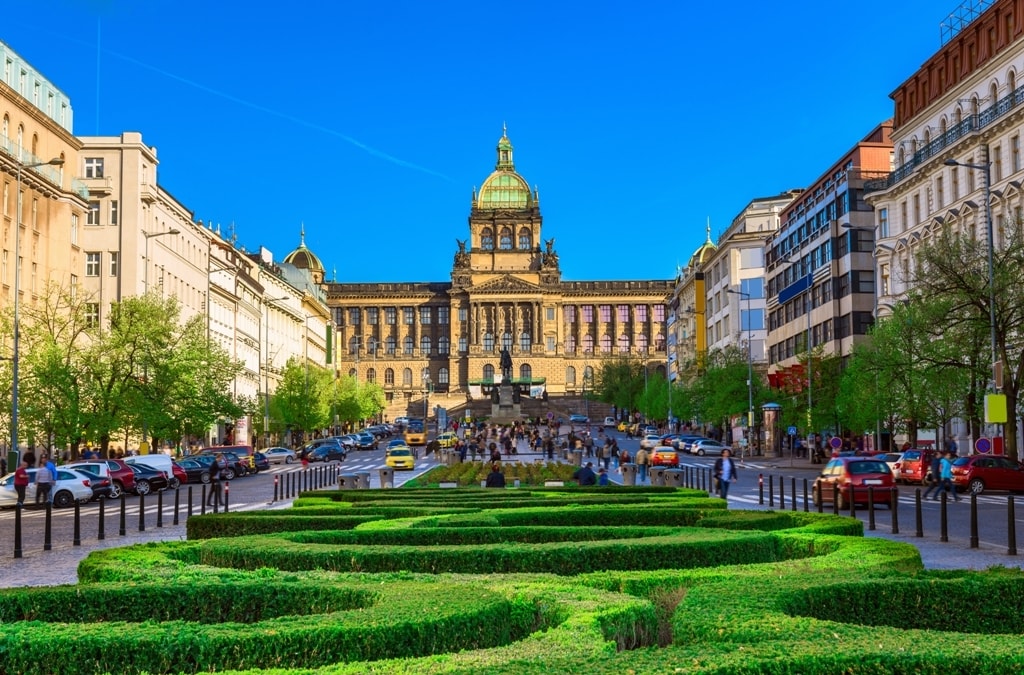
Wenceslas Square is in the middle of the new part of Prague. It is filled with shops, restaurants, and bars and in its center, there is the statue of King Wenceslas, the Patron Saint of Bohemia, which has stood there since the 14th Century. When Charles IV was king, it was a horse market.
A great way to save money is a Prague City Card available for 2, 3, or 4-days. It includes free entrance to more than 50 attractions and 50% discounts on tours and shows.
The National Museum
There are almost 300 museums across the City of Prague and clearly little time to explore even one. The best option is the National Museum is at the top of the Square. There are a few different locations across Prague with millions of exhibits on show.
Imagine that there are more than 5 million in entomology alone. The building on the Square opened in 1891. Some of the highlights in the archaeology section of the Museum are the Roman artifacts from the 1st and 2nd Centuries, Bronze, and Early Stone Age exhibits.
The Jewish Quarter
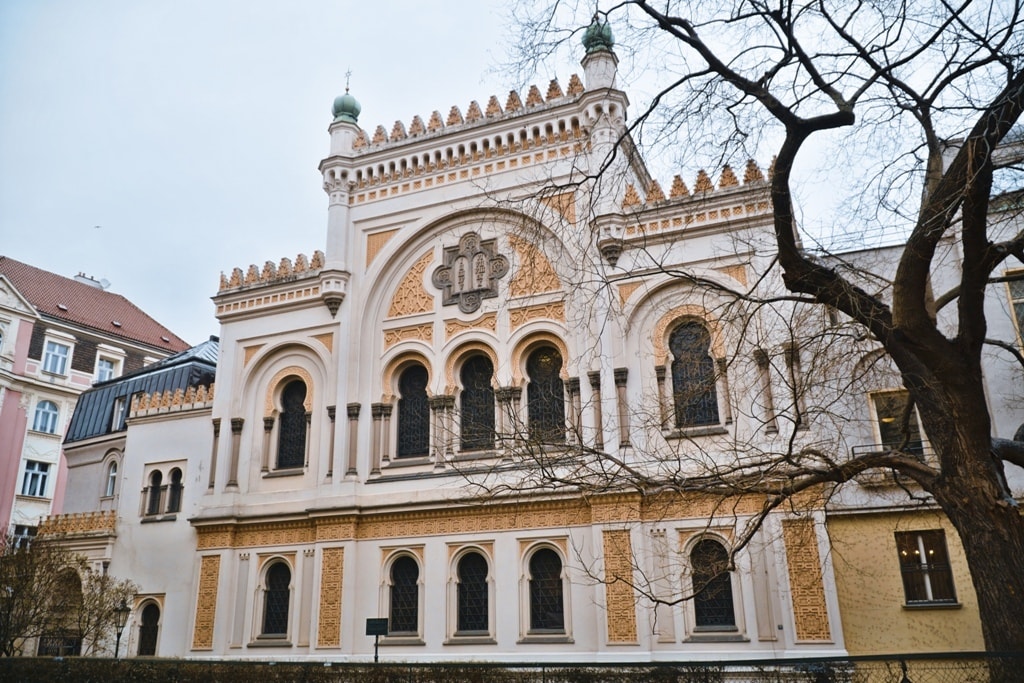
For a few centuries this part of Prague, Joselov, was little more than a slum. That changed towards the end of the 19th Century when much of it was demolished and replaced by Art Nouveau Apartments. There is a very interesting museum to visit among other things.
There has always been a large Jewish population in Prague which was largely confined to a small quarter of the City. It meant the Cemetery had limited space and because the religion does not allow for buried bodies to be moved, they simply had to bury on top of existing bodies.
There are many thousands of tombstones crammed in a very small space. The beautiful Spanish Synagogue is within this quarter. It has a very elaborate interior with gold leaf used to good effect.
Smetana Hall, Municipal House
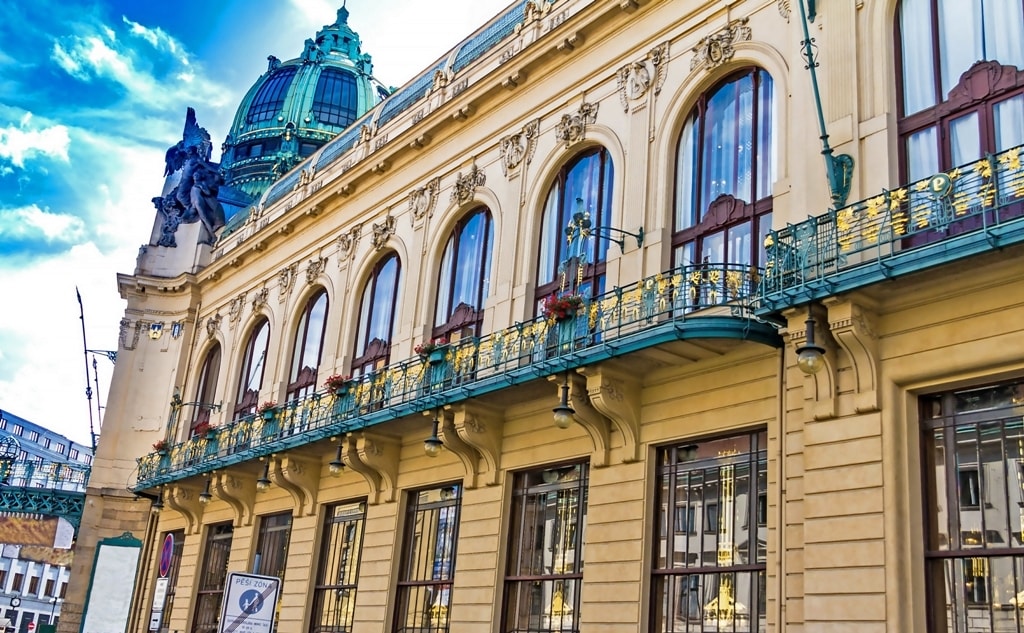
This is a beautiful building where you can actually go in during the day to photograph its internal beauty including the basement. There will be people offering to sell you tickets for a performance. Even if you are no great lover of classical music, a concert lasting less than 90 minutes can be fitted in before dinner.
Two days in Prague: Where to Eat?
Prague is starting to add to its traditional cuisine and you can enjoy fine food in the City. Here are a few ideas for you if you want to find a special restaurant.
La Degustation Bohême Bourgeoise is only one of two with a Michelin Star in Prague. There are just 35 seats with an 8-course meal with locally produced wines. It does come in the very expensive category, however.
Milada has set menus from three to eight courses served on beautiful vintage dishes: pork belly with wasabi and rhubarb or raw scallops with ponzu and tapioca pearls anyone?
Mlynec is a modern restaurant striving to give its patrons quality contemporary cuisine with live jazz as entertainment.
V Zatisi is a striking place combining exotic Indian cuisine with excellent Czech fayre and vegetarian choices.
Practical Information for your 2 day Prague Itinerary
When is the best time to visit Prague
Visit in the shoulder seasons (mid-April-May and September mid-October) to enjoy mild weather (13c in April, May, and October, but a warmer 19c in September) fewer crowds, and cheaper hotel rates (the exception being Easter weekend).
You might also consider visiting in chilly December (averaging 4c) for the festive Christmas Markets and the amazing fireworks display over the river for New Year’s Eve.
In terms of crowds, the worst time to visit is between June-August, these being the hottest months (averaging 21c-27c) but also the wettest, however, this is the time of the year when the city feels most alive holding its biggest festivals with the open-air concerts and cinemas also open, the downside being that flights and hotels are at their highest and queues to get into the museums are long.
It’s best to avoid the cold and potentially snowy months of November and January-March unless you’re happy sightseeing in these conditions, though cold, there’s little rain and very few tourists meaning great prices on hotels.
How to get to and from Prague Airport
Vaclav Pavel International Airport with its three terminals is 20 km northwest of the City.
Airport Express Bus: This is run by Czech Rail and goes directly to and from the main city train station every 10 minutes from 5.30 am to 9.00 pm. It only costs around 2 euros.
There are other companies with terminal kiosks running buses into the City.
Taxis: Authorised taxis run from the airport and you will receive a 20% Discount Voucher for a return trip.
Welcome Pick Ups Private Transfer: A door-to-door private transfer can be booked in advance at a cost starting at 27 euros. Click here for more information and to book your transfer.
How to get around Prague
Prague is a very compact city with all the major tourist attractions within walking distance if you book accommodation within, or close to, the Old Town, much of which is pedestrianized.
The only thing to note is that the castle area is up a hill so public transport in the form of the No22 tram can be a godsend!
If you have mobility issues or young kids and walking isn’t an option for you, consider booking the hop-on-hop-off bus with a 24 or 48-hour ticket that gives you unlimited travel between all the top attractions whilst also providing you with invaluable commentary on all the places you’re passing.
Should you need it, the tram network is very reliable and also cheap and there’s also a metro with 3 lines covering the top attractions of the city center and out to the suburbs along with a good bus network, the buses generally serve the areas where the tram and metro do not reach.
Tickets are interchangeable, working between all 3 public transport options, and allow you to travel for a set amount of time on 1 ticket, either 30minutes (perfect for the city center) or 90 minutes (more for use in the suburbs) with 1 day and 3 day passes also available.
You can also cross the Vltava River using the public ferryboat lines using the same tickets as the metro, tram, or bus.

